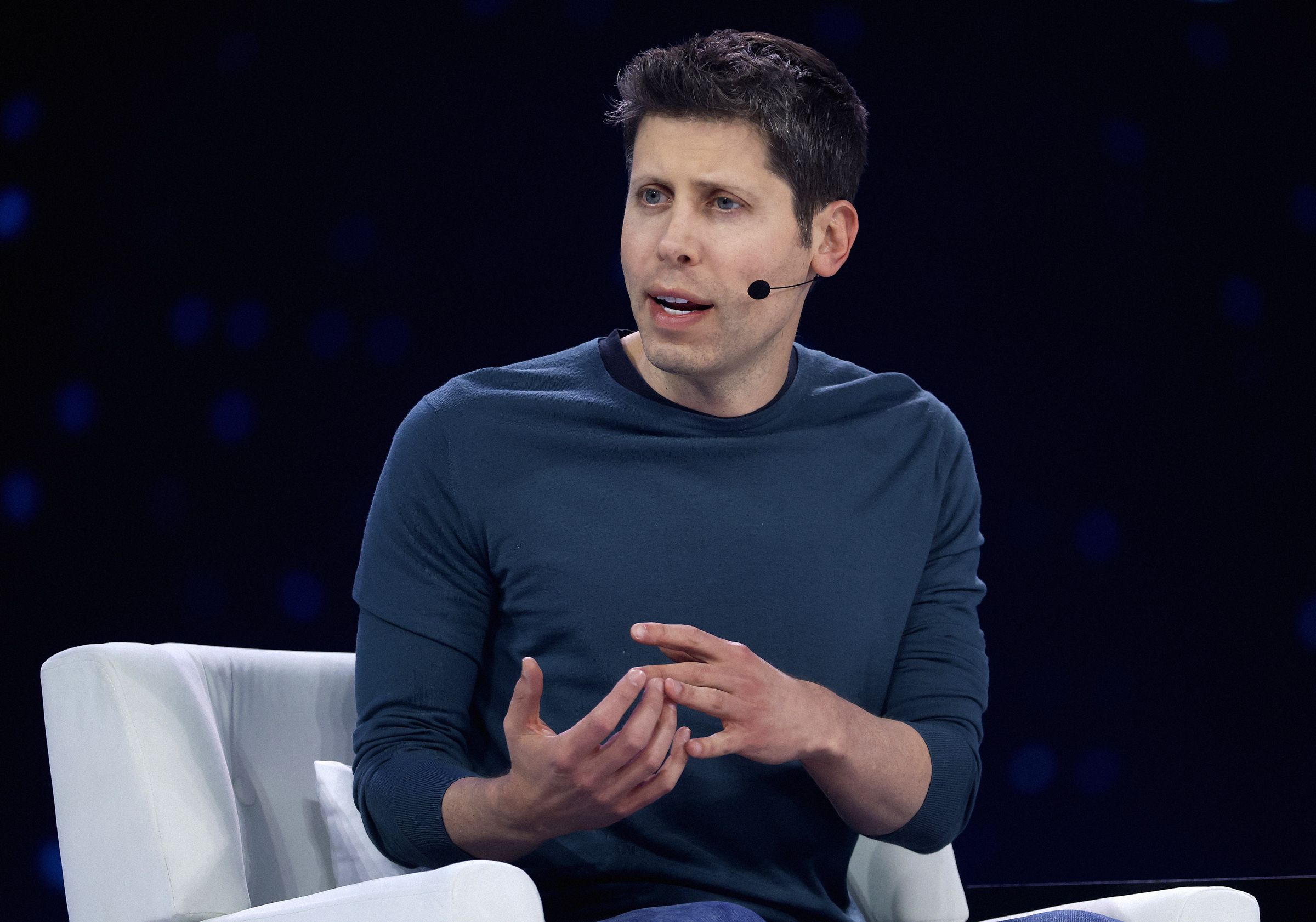On Monday, OpenAI unveiled a new way to embed third-party apps directly into ChatGPT. At the company’s annual developer conference in San Francisco, CEO Sam Altman said the move would “enable a new generation of apps that are adaptive, interactive, and personalized, that you can chat with.”
Starting today, some developers will be able to use a preview version of a new apps software development kit (SDK) to build apps within ChatGPT using open standards. The ability to distribute these apps is currently limited to a handful of big partners. Altman showed off several examples of how these apps would ultimately work within ChatGPT. The demo featured Spotify, Canva, and Zillow apps appearing inside a chat and responding to typed commands.
In one example, OpenAI software engineer Alexi Christakis launched a chat directed at the Canva app and prompted Canva to draw up posters for a dog-walking business. From there, he asked for a pitch deck in order to raise capital for the business.
Christakis then asked ChatGPT to suggest a city that would be ideal to expand the business into (it offered Pittsburgh, for those wondering). Next he called up a Zillow ChatGPT app and asked it to show homes for sale in the city. This brought up an interactive map showing houses for sale. Christakis asked ChatGPT to refine the results to just three-bedroom houses with a yard.
Altman said that OpenAI plans to introduce new ways for developers to monetize their ChatGPT apps, including methods for buying things through the chatbot. “Soon we’ll offer an agentic commerce protocol, with instant checkout from right within ChatGPT,” Altman said.
This is not OpenAI’s first effort to introduce ChatGPT apps. The company announced a way to build custom widgets or GPTs at its developer conference two years ago. When the GPT Store officially launched in January 2024, OpenAI said that developers had created over 3 million custom GPTs. Ultimately, however, the widgets did not prove a big hit.
OpenAI didn’t share details around any revenue-share agreements with Canva, Zillow, Spotify, and the other apps it highlighted today.
The new SDK announcement signals a deeper commitment to working with established enterprises and app makers—and an emphasis on keeping users within ChatGPT itself. If the web and mobile eras of the past 30 years were defined by users browsing the web or being locked into a mobile app experience, OpenAI is now combining the two into its own kind of chat-driven operating system.
Nick Turley, OpenAI’s head of product for ChatGPT, said in a briefing after the keynote that the company “never meant to build a chatbot; we meant to build a super assistant, and we got a little sidetracked.” He indicated that OpenAI is most excited about what it has achieved in natural language processing, but that the $500 billion startup will continue to experiment with different user interfaces around that.
“Will people spend all of their time in ChatGPT? I don’t think so,” Turley said. “I can imagine you starting your day with ChatGPT,” then being guided toward other apps and websites.
Beyond reimagining existing apps, OpenAI hopes to put itself at the center of efforts to build agents that use AI to complete tasks on a user’s behalf. The company unveiled several tools for building agents including AgentKit, a drag-and-drop interface for building advanced AI tools.
Capturing developer mind-share is also, of course, about coding tools. At Monday’s event, OpenAI announced that Codex, a model optimized to write code, would come out of research preview and become generally available. The company also announced new Codex tools, including a way to ask questions about code and edit it via Slack messages, an SDK for the Codex model, and new analytics tools to allow companies to monitor their employees’ Codex usage.
OpenAI is competing with Google, Anthropic, and Amazon in trying to lure developers to its services. The company is also under pressure as rivals like Meta and DeepSeek launch capable open source models, which allow developers to fine-tune premier models for their needs, without having to pay for access to OpenAI’s APIs.
This August OpenAI released its first open source model in several years, GPT-OSS, and also made a long-awaited new flagship model, GPT-5, available through its regular API. OpenAI also upgraded its coding model for developers in September, a move seemingly designed to respond to very capable coding models from both Anthropic and Google. OpenAI debuted tools for building agents in March.
At last year’s developer day, OpenAI announced an API for low-latency voice interactions, ways of fine-tuning vision models, and a tool for fine-tuning small models using OpenAI’s more powerful ones.
OpenAI is also building a vast empire of data centers at a time when questions have begun to swirl about the economic viability of generative AI. This morning, the company announced a major deal to acquire 6-gigawatts’ worth of AMD chips in a move that may also see the company take a 10-percent stake in the chipmaker.
During today’s keynote, Altman suggested that OpenAI was already helping software developers reach new levels of productivity—a fact that might help ramp up demand for all that compute.
“This is the best time in history to be a builder,” Altman said. “It has never been faster to go from idea to product. You can really feel the acceleration at this point.”
Reece Rogers contributed to this report.




